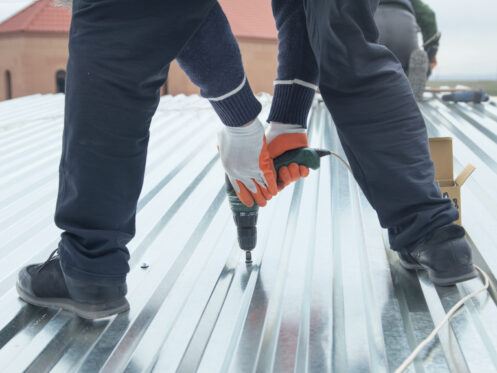Green roofs have long been popular in Europe. The German-speaking DACH region of Germany, Austria, and Switzerland are pioneers in green roofing, and the city of Hamburg is planning to convert 70 percent of new buildings to be green roofed. In Basel, Switzerland, there’s even an amendment to the city’s Building and Construction Law stipulating that all new and renovated flat roofs must be greened.
What exactly is a green roof? Read on to find out what a green roof is and the advantages and benefits of having one.
What Is a Green Roof?
A green roof is a living, self-sustaining component with many ecological benefits. Homeowners, businesses, and even entire cities are buzzing about green roofs as a way to be ecologically friendly while tackling the problems of conventional roofs. Expect them to grow in popularity with businesses, schools, cultural institutions, and private homes.
Rooftop gardens impact all ecosystems positively by supporting plant and animal life such as herbs, grasses, wildflowers, and succulents, and provide a habitat for birds, bees, and butterflies to play their crucial roles. A neglected space on top of a flat building can become useful and look beautiful.
A green roof is constructed with plants on top of several structural layers and levels for insulation, filtering, and drainage along with a waterproof membrane. Theoretically, it can be built on top of almost any building with a flat roof including single homes, multi-family dwellings, commercial buildings, shopping centers, and parking garages.
A green rooftop requires structural analysis by a professional to ensure that the structure is sound and that it’s possible to install greenery and various landscape design elements. Safety concerns must also be addressed. Ideally, It should be in a location with the right balance of sunshine and shade so plants can grow and thrive. There should also be a nearby water source to use during prolonged dry spells.
Types of Green Roofs
Green roofs can be constructed in a variety of ways. Landscape designers, horticulturists, structural engineers like roofing professionals, and architects are the experts who determine the appropriate type of rooftop garden for a specific building. The ways they are constructed are divided into two basic categories: Extensive and Intensive Roofs.
Extensive Green Roofs
An extensive green roof requires a minimal amount of attention and is suitable for plants that are drought-resistant. The planted area is only entered occasionally for maintenance. More of a roof than a garden, an extensive green roof is easier to install and maintain.
Intensive Green Roofs
The intensive green roof is an accessible rooftop garden featuring plants such as grasses, perennials, shrubs, and small trees. They must be able to accommodate more soil and heavier plants. Intensive green roofs at their most complex level are atop sturdy buildings and are essentially elevated parks that can support trees, shrubs, walkways, and benches.
Benefits of Green Roofs
Green roofs have many benefits for the environment. They can absorb carbon dioxide, cut down on heat absorption, and limit stormwater runoff. For the building owner, benefits include an extended roof life, lower heating and cooling costs, and depending on the location, tax incentives.
The soil and plants on green roofs act as a sponge to absorb water that would otherwise plunge down the gutters and wash through the streets below to an over-taxed sewer system. The result is better stormwater management for the neighborhood.
During the summer, the plants in green roof gardens play a cooling effect. They’re also very effective in combating pollution since air quality is improved by plant photosynthesis. They also reduce the amount of energy a building uses to regulate temperatures.
Green Roofs VS Conventional Roofs
Like conventional roofs, the role of green roofs must be to protect the building from the elements and promote drainage and stormwater management. The layers of a green roof system accomplish this with a waterproof membrane. At the same time, the green roof has to support a growing area and irrigation. Green roofs are much longer lasting than conventional roofs. Their natural insulation reduces energy costs.
Is a Green Roof Right for You?
When it’s time to replace your roof, Jimmy's Roofing can help you decide whether to “go green” or stick with a conventional roof replacement. Jimmy's Roofing is a roofing company that offers residential and commercial roof repairs, installations, and preventative maintenance. We have multiple locations in the Pacific Northwest. Call Jimmy's Roofing today and schedule a roof inspection to begin the process of improving your roof.



 #thejimmysWAY
#thejimmysWAY